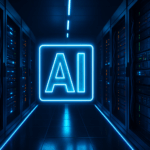Google (NASDAQ:GOOGL) DeepMind has announced the formation of a dedicated team to advance the development of large generative models, referred to as “world models,” which aim to simulate real and virtual environments. These models represent the next phase in artificial intelligence, focusing on decision-making, planning, and creative problem-solving. By leveraging video and multimodal data at scale, these systems are expected to broaden AI’s capabilities in robotics, autonomous systems, and interactive entertainment. This initiative signifies Google’s competitive stance in the AI landscape, aligning with its efforts to refine existing tools and develop new ones that push technological boundaries.
What are world models, and why are they significant?
World models are computational frameworks designed to enable AI systems to interpret and simulate their environments. They hold significance in applications ranging from autonomous vehicles, which rely on these models to predict road and traffic conditions, to generalist robots requiring diverse and safe training environments. Despite their potential, one of the primary challenges lies in creating rich and varied simulated settings that ensure effective training for embodied AI systems, particularly those operating in dynamic or unpredictable environments.
How does this initiative connect to Google’s previous AI efforts?
This new team will build upon Google’s existing AI models, including Gemini, Genie, and Veo. For example, Genie 2, an upgraded version of the earlier model, generates 3D environments from text and images while incorporating physics, character animation, and object interactions. These simulations, powered by large-scale video datasets, are designed to predict sequences of events with precision, allowing AI to better understand and anticipate real-world dynamics. Such advancements echo the company’s broader mission to refine pre-trained systems and accelerate progress toward artificial general intelligence.
When compared to similar initiatives, the approach remains consistent with other industry trends. In September, the AI startup World Labs, led by Stanford’s Fei Fei Li, secured $230 million to develop analogous large-scale world models. This highlights a competitive landscape where several entities are converging on the development of spatially intelligent AI, emphasizing the increasing importance of these technologies across sectors like robotics, gaming, and autonomous systems.
Tim Brooks, a former leader at OpenAI, is spearheading DeepMind’s new team. Brooks previously co-led the development of OpenAI’s video generation model Sora, known for its sophistication. His transition from OpenAI to Google DeepMind marks a significant shift, suggesting a focused effort by Google to pool expertise into its generative AI projects. Brooks’ leadership will likely influence the direction and pace of advancements in this domain.
Google DeepMind’s commitment to scaling these generative models aligns with its aim to enhance the versatility of AI systems. A job posting from the company emphasized the importance of pretraining on video and multimodal data, indicating that world models could power advancements in visual reasoning, simulation, and real-time entertainment. These developments are pivotal as companies such as Meta, Microsoft (NASDAQ:MSFT), and Amazon continue to compete in developing enterprise-focused AI solutions.
World models are increasingly being recognized as essential tools for computational and practical applications. By simulating environments with high fidelity, these models could unlock new possibilities in AI training, from improving autonomous vehicles to enabling robots to perform complex tasks in uncertain environments. However, achieving scalability and operational safety in these systems remains a critical focus for researchers and developers.
Compared to Google DeepMind’s earlier efforts, these models represent a significant step forward. Projects like Genie 2 demonstrate how AI can now simulate complex interactions and physics-based environments, whereas older iterations were limited to simpler simulations. These advancements also position Google as a frontrunner in AI innovation, although competition from emerging startups and established tech firms will likely intensify.
World models are expected to have wide-ranging implications, particularly in sectors that require precise environmental simulations. Google’s focus on scaling AI systems to support these applications suggests a commitment to maintaining leadership in AI research. For users, these developments could translate into more sophisticated tools for training, simulation, and problem-solving across industries.









